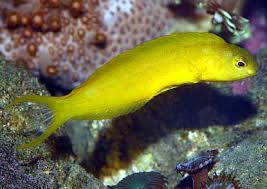Dragons in Chinese Theatre and Dramatic Arts
The dragon (龙, Lóng) is one of the most powerful symbols in Chinese culture, embodying strength, wisdom, prosperity, and divine power. This legendary creature has played a significant role in traditional Chinese theatre and dramatic arts, appearing in opera, puppetry, shadow plays, and stage performances. The presence of dragons in theatrical traditions reflects historical beliefs, folklore, and philosophical teachings, making them more than just mythical creatures—they are narrators of cultural identity, morality, and artistic expression.
This article explores the role of dragons in Chinese theatre, their symbolism, dramatic representations, and impact on performance arts throughout history.
1. The Symbolism of Dragons in Chinese Theatre
a. The Dragon as a Divine and Benevolent Figure
In Chinese culture, the dragon is often associated with heavenly power, wisdom, and prosperity. In theatrical performances, dragons frequently appear as:
- Celestial guardians, protecting emperors, deities, or righteous characters.
- Symbols of imperial authority, reinforcing the divine right of kings.
- Mythical creatures that test heroes, guiding them on their journeys.
b. The Dragon as a Force of Chaos
Although dragons are typically benevolent in Chinese mythology, they sometimes take on antagonistic roles in theatre. In certain operas and folklore-inspired dramas, dragons:
- Represent natural disasters, such as floods, storms, or droughts, which heroes must overcome.
- Act as villains or obstacles that warriors must defeat to prove their worth.
- Serve as testers of virtue, challenging heroes with moral dilemmas.
The duality of the dragon in Chinese theatre reflects the broader Yin-Yang philosophy, where power can be used for both creation and destruction.
2. Dragons in Chinese Opera (戏曲, Xìqǔ)
a. The Role of Dragons in Peking Opera (京剧, Jīngjù)
Peking Opera, one of the most famous Chinese theatre traditions, incorporates dragons in various ways:
- Dragon-themed costumes: Actors portraying imperial or celestial figures wear robes with dragon embroidery, signifying their divine authority.
- Dragon masks and headpieces: Performers representing mythical beings or supernatural warriors often wear dragon-inspired masks.
- Martial arts choreography: Some fight sequences mimic dragon-like movements, with flowing and spiraling motions to capture the dragon’s power.
b. Notable Opera Performances Featuring Dragons
Several classic Chinese operas feature dragons as key figures in their narratives. Some famous examples include:
- “The Tale of the White Snake” (白蛇传, Bái Shé Zhuàn) – The White Snake, a mystical being, takes on dragon-like attributes and battles spiritual forces.
- “Nezha Conquers the Dragon King” (哪吒闹海, Nézhā Nào Hǎi) – A dramatic retelling of Nezha’s battle against the tyrannical Dragon King.
- “The Heavenly Dragon and the Mortal” – A lesser-known folk opera where a dragon tests a mortal’s wisdom before granting him immortality.
In these operas, dragons are portrayed through lavish costumes, acrobatic performances, and symbolic gestures, captivating audiences with their mystical and powerful presence.
3. The Dragon Dance in Theatrical Performances
a. Origins of the Dragon Dance (舞龙, Wǔ Lóng)
The dragon dance is one of the most well-known traditional Chinese performances. Originally part of rituals for rain and prosperity, it later became a staple of festivals, temple fairs, and theatrical storytelling.
b. How the Dragon Dance Enhances Theatre
In theatrical settings, the dragon dance is used to:
- Represent celestial power, as in historical dramas featuring emperors or divine beings.
- Create visual spectacle, adding energy and movement to large-scale productions.
- Symbolize the hero’s journey, as seen in plays where the protagonist interacts with mystical creatures.
The dragon dance in theatre differs from festival versions by incorporating narrative elements, making the dragon an active part of the storyline rather than just a celebratory display.
4. Shadow Puppetry and Dragons (皮影戏, Pí Yǐng Xì)
a. The Art of Shadow Puppetry
Shadow puppetry is one of China’s oldest theatrical traditions, dating back over a thousand years. Performers use intricately designed leather puppets, projected onto screens, to tell mythological and historical stories.
b. Dragons in Shadow Plays
In Chinese shadow theatre, dragons often appear as:
- Celestial creatures battling demons, illustrating the theme of good vs. evil.
- Protectors of heroes, offering wisdom or magical assistance.
- Mystical beings, challenging characters to prove their virtue before granting them divine gifts.
Some famous shadow puppet performances featuring dragons include:
- “The Dragon King’s Judgment” – A story where a mortal must face the Dragon King to save his village.
- “The War of the Heavenly Beasts” – A shadow play where different mythical creatures, including dragons, compete for dominance.
Shadow puppetry brings dragons to life through dynamic storytelling, lighting effects, and artistic craftsmanship, making them an integral part of Chinese theatrical heritage.
5. Dragons in Kunqu Opera (昆曲, Kūnqǔ) and Yue Opera (越剧, Yuèjù)
a. Kunqu Opera’s Elegant Depictions of Dragons
Kunqu Opera, one of the oldest forms of Chinese opera, emphasizes poetry, elegance, and refined storytelling. Dragons in Kunqu are often:
- Celestial figures, guiding protagonists toward enlightenment.
- Symbolic guardians, appearing in dream sequences or spiritual visions.
- Represented in dance movements, where performers mimic dragon-like gestures.
b. Yue Opera’s Feminine and Symbolic Use of Dragons
Yue Opera, known for its soft melodies and female-led performances, uses dragons in romantic and fantastical narratives. Some performances depict:
- A princess who falls in love with a dragon spirit, highlighting the theme of forbidden love.
- A warrior blessed by the Dragon King, gaining strength to defend her kingdom.
- A mystical dragon pearl, symbolizing destiny and fate in human affairs.
These operatic traditions further enrich the versatility of dragons in Chinese theatre, showing how their representations shift depending on artistic style and regional influences.
6. Dragons in Modern Chinese Theatre and Cinema
a. The Evolution of Dragon Symbolism
In modern theatre, dragons remain a staple of Chinese storytelling, but their representations have evolved to:
- Incorporate technology, such as LED projections and 3D holograms in stage performances.
- Expand into global cinema, influencing films like “Hero” (2002) and “The Forbidden Kingdom” (2008).
- Blend with contemporary themes, appearing in modern musicals and experimental theatre.
b. Dragons as Cultural Bridges
Today, dragons in Chinese theatre and cinema serve as cultural ambassadors, introducing global audiences to the rich artistic heritage of China. They are not just mythical beings but artistic icons, continuously reshaped by new storytelling techniques and artistic innovations.
Conclusion: The Everlasting Presence of Dragons in Chinese Theatre
From ancient operas to modern performances, dragons have been a cornerstone of Chinese theatrical traditions. Whether appearing in Peking Opera, shadow puppetry, or dragon dances, they remain symbols of power, wisdom, and artistic mastery. As Chinese theatre continues to evolve, the image of the dragon endures, proving its timeless appeal in myth, performance, and cultural expression.
In every dance movement, theatrical mask, and dramatic battle, the spirit of the dragon lives on, keeping its legacy alive for generations to come.


